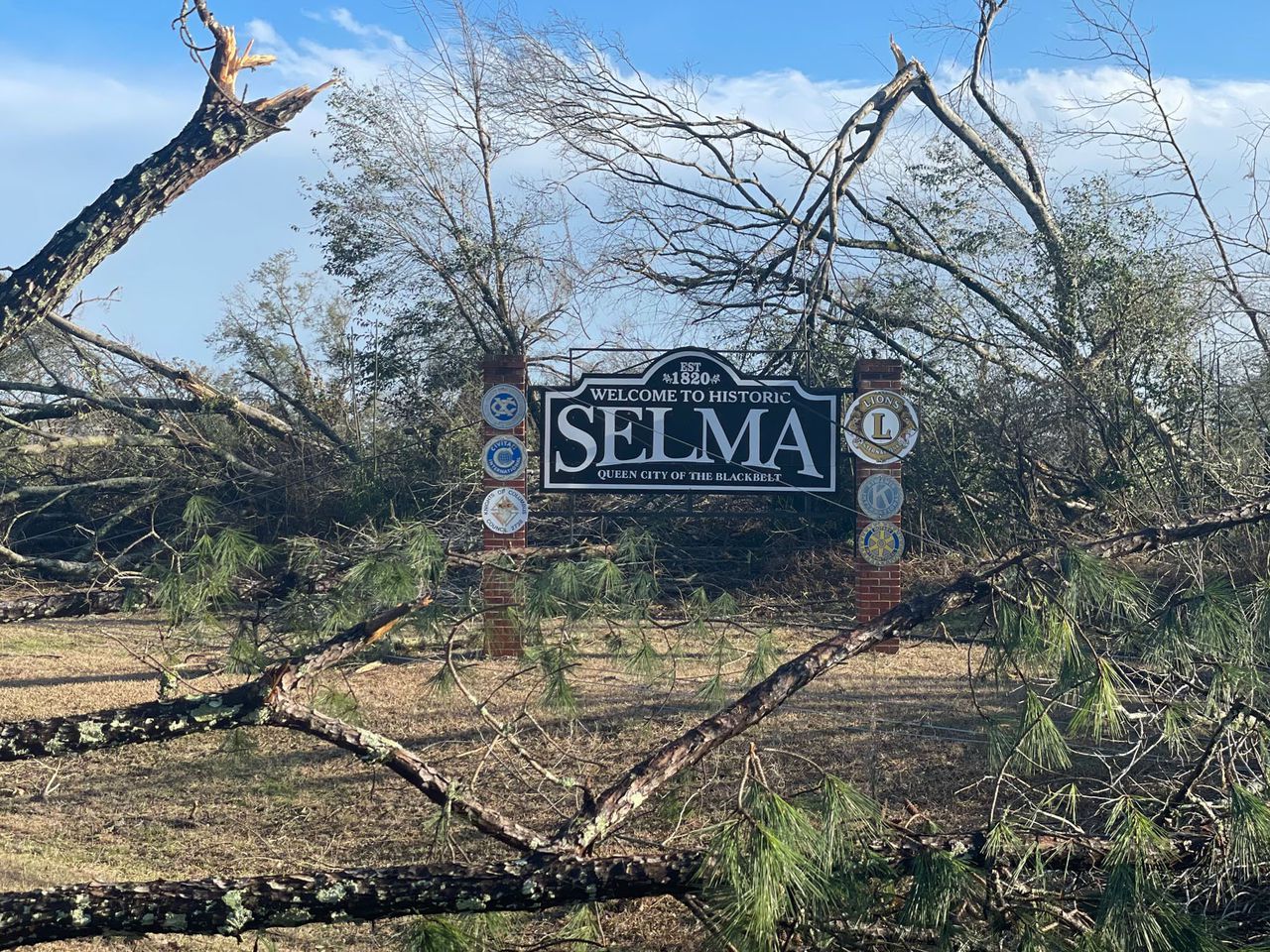Guest opinion: We owe Selma everything
This is a guest opinion
Natural disasters have a way of living up to their identifiers. The kind of havoc they reek press against the fabric of stability and erode aspirations of growth and hope. This is true no matter where you live.
But then there are places where the capacity for error or disaster doesn’t exist on the same spectrum as others. The tornado that struck Dallas County, Alabama, and surrounding areas is a keen example of this reality.
Dallas County, home of Selma, Alabama, represents one of many areas suffering from the ambition of an advanced, technological, artificially intelligent society. As the plot for a more tech-savvy society deepens, rural communities – especially rural Black communities – undergo regressions within their educational and economic climates.
Moving away from a rural community isn’t new. Black folks, in particular, have been doing this before, during, and after the first and second Great Migration movements, where southern Black folks fled to places like Detroit, Chicago, and Los Angeles. Many of these folks, particularly those who left home in the 1970s, didn’t go far. They traveled to nearby southern cities like Birmingham, Atlanta, and Nashville for more job opportunities, better school systems, and a stronger social environment.
Only in the sight of death do we see people who grew up in some rural southern town return home to sit on the porch, watch the sunrise and set, waiting for God to call them home. Unless they are already boxed up, heading home to be buried by and next to family.
Over the past decade, while Alabama has increased its population by more than 244,000 people, Black Belt counties, like Dallas, Greene, Perry, Lowndes, Macon, Sumter, and others stretched across the central eastern border continue to experience population decline. Dallas County has lost more than 5,000 people since 2010, and that number continues to increase.
Much of this has to do with the closing of jobs – from plants to retail stores, which either reflects or impacts the lack of velocity within the rural Black dollar. Other factors include the closing of rural hospitals and the aspects mentioned above concerning the quality-of-life citified areas can provide. And indeed, neither a pandemic nor pre-existing conditions have been friends to rural Black folks over the past few years – or ever.
When it comes to Selma, Alabama, many people thought that the production of Selma (2014) would catapult the city, itself, to new economic and governmental heights, but this thought has only been a figment of the imagination.
The last thing Selma needed was a natural disaster, as it could lead to further departures from citizens who have called it home all their lives; it could negatively impact businesses, causing more job losses; and it could quench the already frail spirit of those who have been working tirelessly to keep Selma alive. Even the graveyards have been enwrapped with debris.
Dilapidation and disaster are working together to evict many of Selma’s citizens. And with the approaching days of the Selma Jubilee, nothing disturbs me more than the presence of marching choreographers and performers who bring their feet but not their investment.
Crossing over the Edmund Pettus Bridge reflects the blood, sweat, and tears of folks like Rev. Hosea Williams, John Lewis, C.T. Vivian, Amelia Boynton Roberson, Marie Foster, Sheyann Webb, Jimmie Lee Jackson, Rev. James Reeb, Viola Liuzzo, Selma citizens and others shed as voting rights was, quite literally, born by a river.
Commemorating the lives of those who have labored in the fight for civil and voting rights should always remain a ritual within the civic compass of this country, but it shouldn’t be used as just another campaign stop or serve as a checkbox on a “Good Allyship” to-do list. For too long, people have spoken of Selma as if it is only a historical monument rather than a town full of people who still call it home. Commemoration and preservation shouldn’t limit Selma’s greatness as “history” alone.
No, life is still there. People are still breathing, working, revitalizing, and living in the town that has given this nation its bona-fides. Yes, this nation owes Selma – and her people – everything.
As the Alabama Congressional Delegation has called on the federal government to increase its resources for the cities suffering from the natural disaster that took place on January 12, 2023, each of us should be asking ourselves how we can contribute to the rebuilding and restoring efforts.
Be it money, prays, our presence, our or hand, let it come with a tangible investment into Selma’s economy – an investment that embodies the seeds of a coming harvest, the water onto already growing fruits, and the embracing of existing efforts by Selma’s people that say to us, “We’re still here.”
How dare we let a cornerstone of our democracy wallow in despair?
Christian G. Crawford is a writer from Birmingham, Alabama
